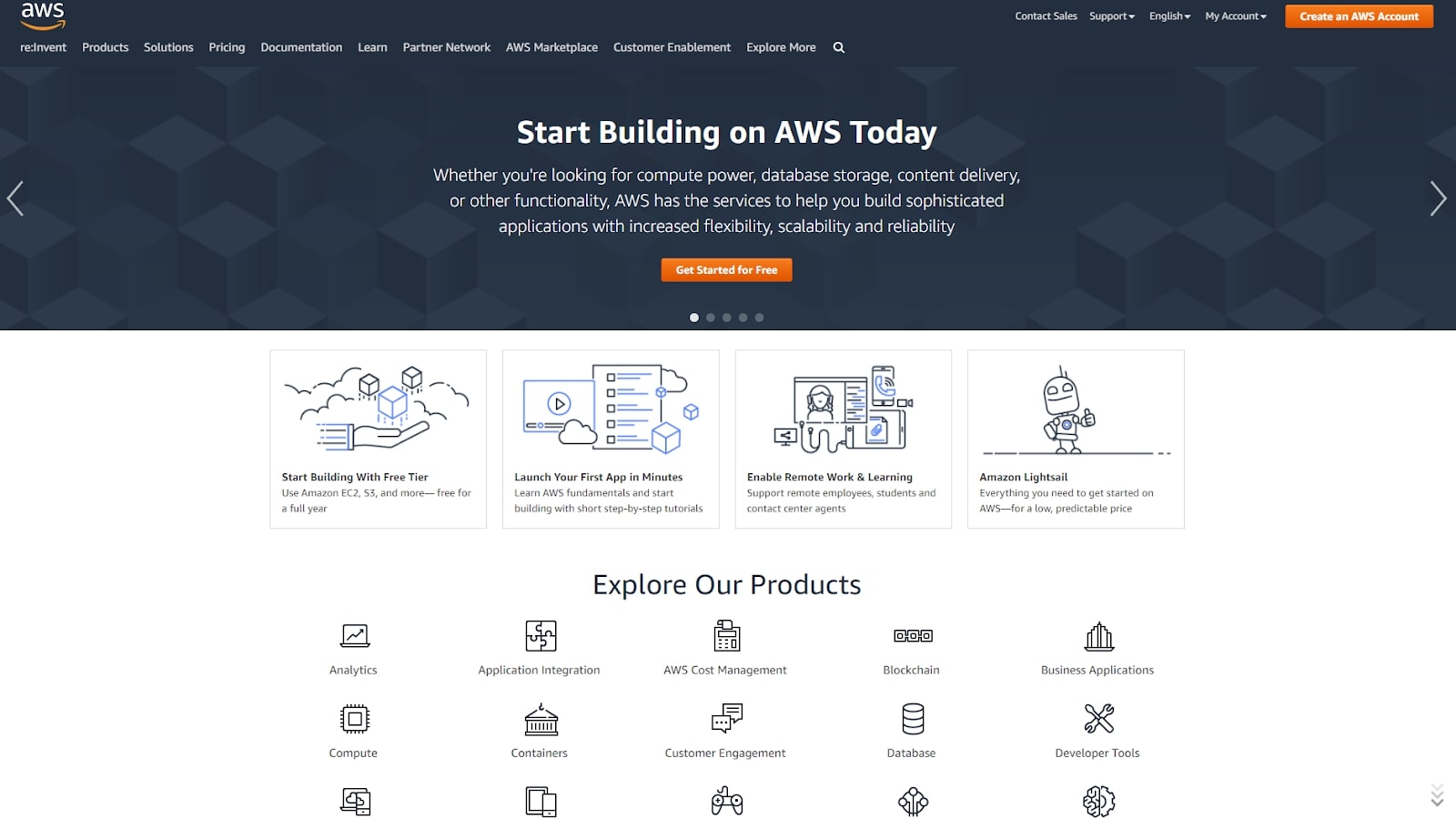Tom's Guide Verdict
An outstanding cloud platform with a phenomenal list of features, AWS for cloud storage is only held back by its relative complexity and complicated pricing structure.
Pros
- +
Super-cheap long-term storage
- +
Extremely versatile
Cons
- -
Complicated pricing structure
- -
Expensive support
Why you can trust Tom's Guide
Without a doubt, Amazon Web Services (AWS) is the biggest cloud platform on the planet, with over 175 different services and millions of customers. In fact, most of the best cloud storage solutions run on top of AWS, giving you a more accessible interface and simplifying the process of using such a complex cloud platform.
For our AWS review, we’ll focus on Amazon Simple Storage Service (S3). This is the clearest route to using cloud storage on AWS. Note, however, that there are several backup and transfer products under the AWS umbrella that might suit your needs better, if you need hybrid cloud storage (AWS Storage Gateway), physical devices to integrate your local network with AWS (AWS Snow Family), or a focus on centrally managed backups (AWS Backup).
AWS: Plans and pricing
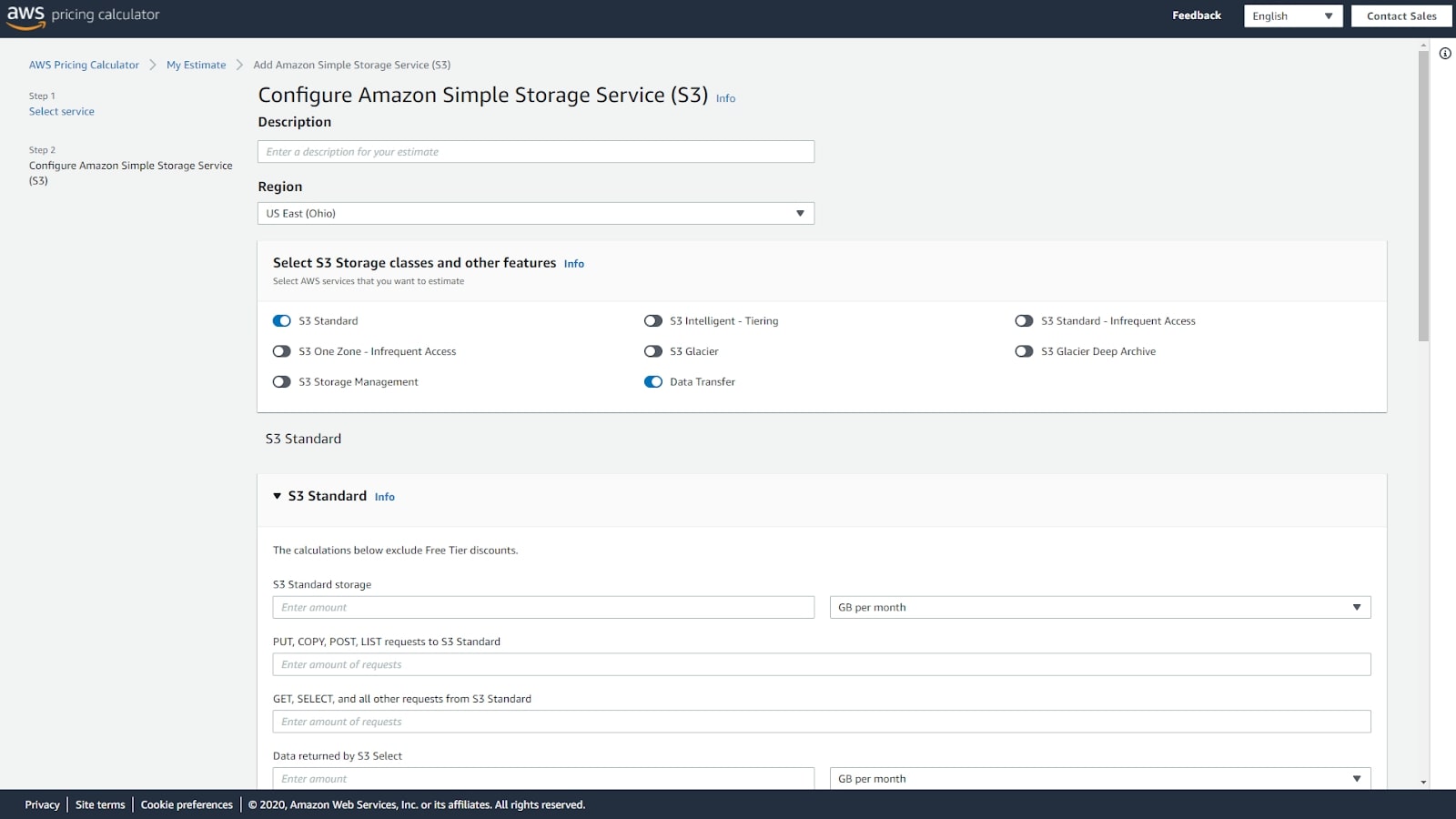
AWS pricing is complicated, even if you disregard all other AWS products and just consider Amazon S3. Amazon has put together a whole site for estimating the cost of your service, but the idea is that you only pay for what you use and there’s no minimum fee. You receive 5GB storage for free for the first year.
There are 13 data center regions (e.g., US-East-Ohio, Europe-London, etc.), each with its own pricing. Then, there are six storage tiers with different pricing. These mainly differ in how quickly you can access your data. More immediate access costs more.
Your monthly bill will also change based on how much you’ve stored, how often you accessed it, how much you transferred in and out of the service, the analytics you performed, and any backups made.
For a very broad estimate, expect to pay around $25 per TB a month for storage on the S3 Standard tier. Storage on tiers where you need infrequent access can drop the price to just $1 per TB a month. AWS’s storage is the cheapest that you’ll find if you’re willing to configure it properly, but its complicated pricing structure could be a turnoff for smaller businesses.
Features
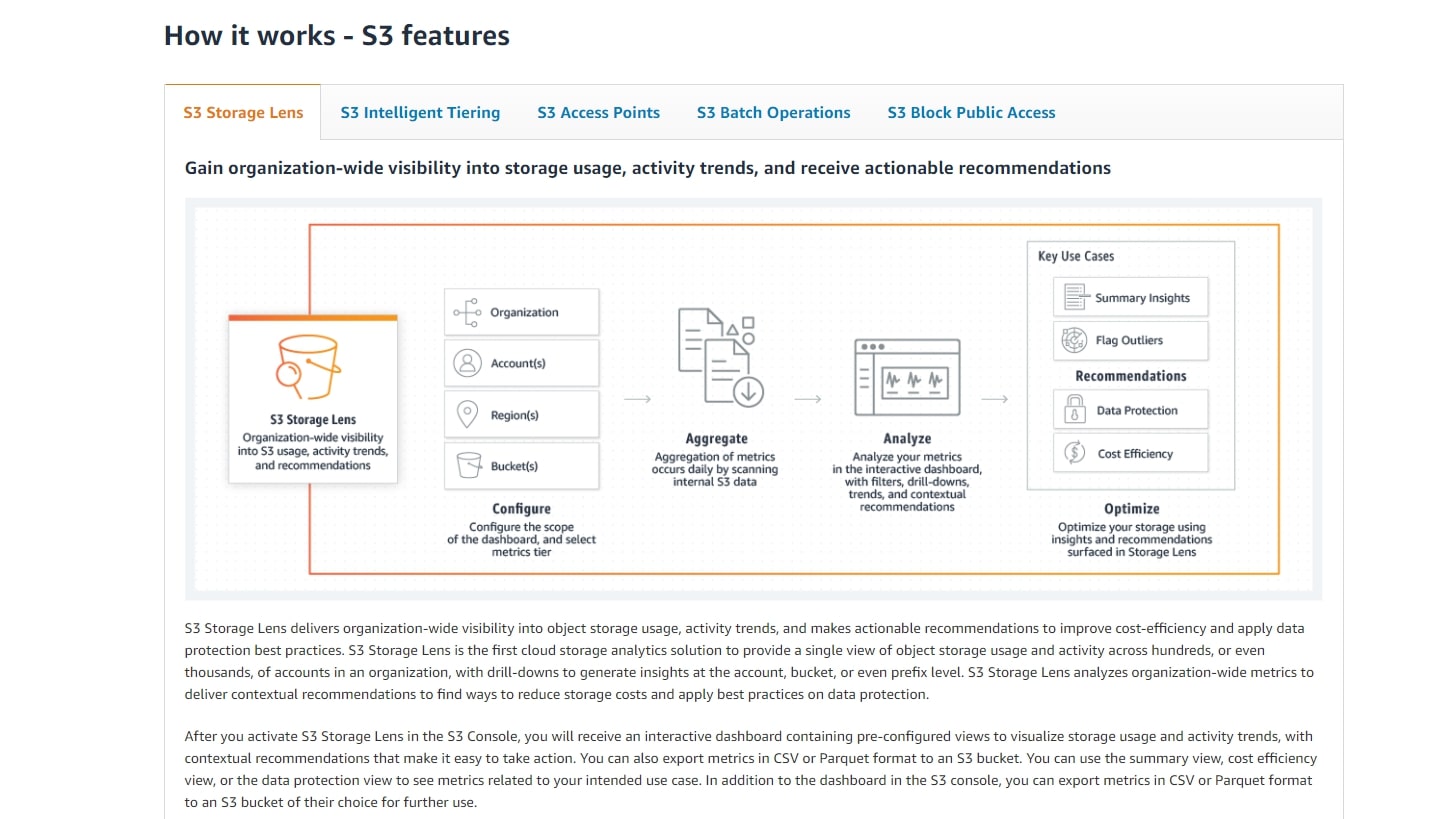
Amazon S3’s focus is on storing, managing, and analyzing enormous amounts of data. Any object (file) can have metadata added to it, making organization and analysis simpler.
If you choose S3 Intelligent Tiering, you can move your objects between the different access tiers as you see fit. This can make your cloud storage cheaper as you move older files to super-cheap deep archive storage.
Amazon S3 is also an excellent choice if you have compliance requirements. Your data can conform to FISMA, FedRAMP, HIPAA, HITECH, PCI-DSS, and EU Data Protection requirements (GDPR), and there are tools for discovering and protecting your most sensitive data.
Interface and in use
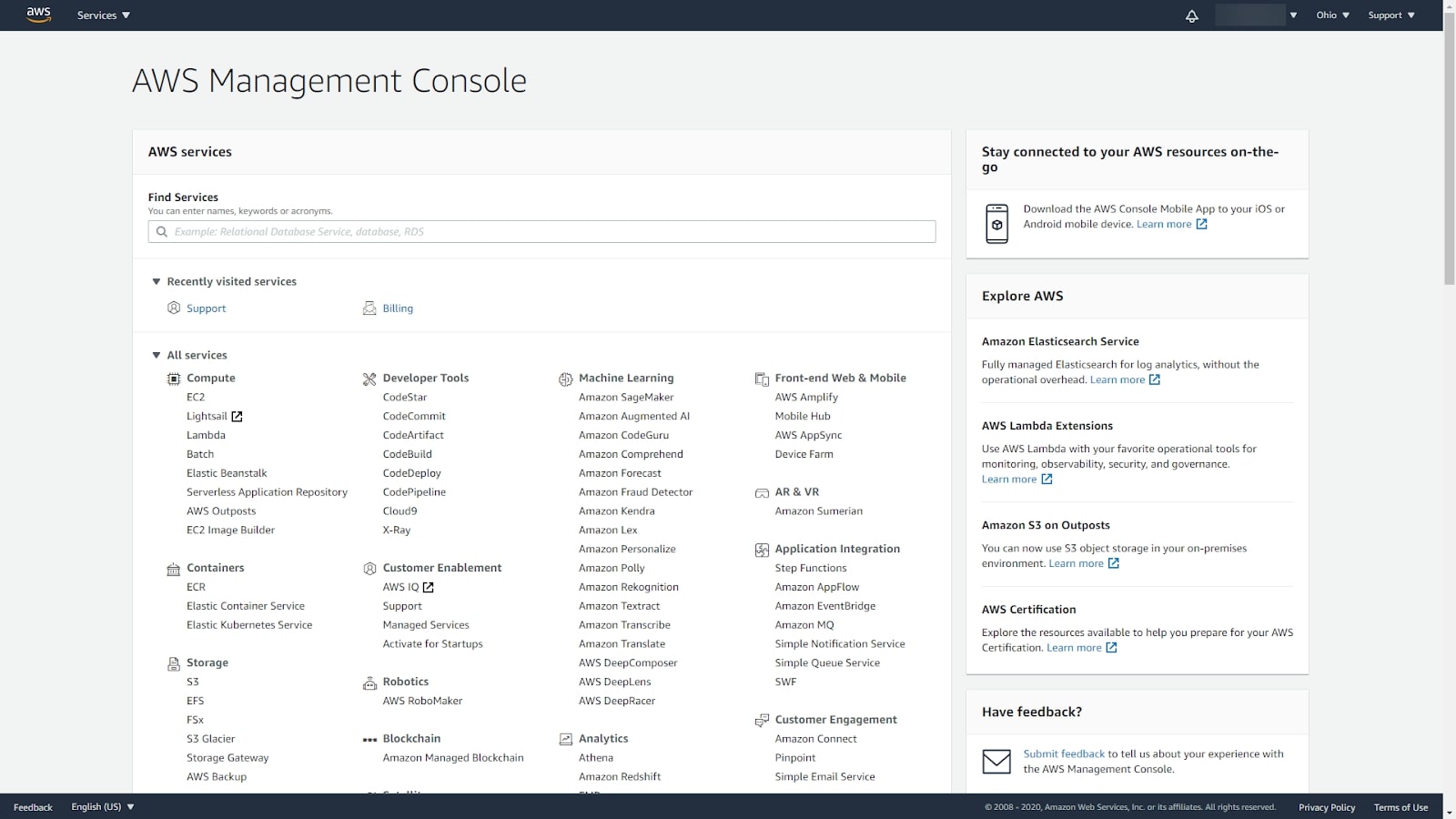
AWS uses a single management console for hundreds of products, which can initially be daunting but helps keep things consistent. To get started with S3, you create a bucket (file storage location), choose a region, and set up permissions for others to read and write your data. You can now add objects (files) to your bucket through the web interface.
If you want to automatically upload files from your desktop, you’ll need a third-party client. There are free options, like S3 Browser and CloudBerry Explorer Freeware, but it's a little strange that AWS doesn’t have its own desktop client.
Support
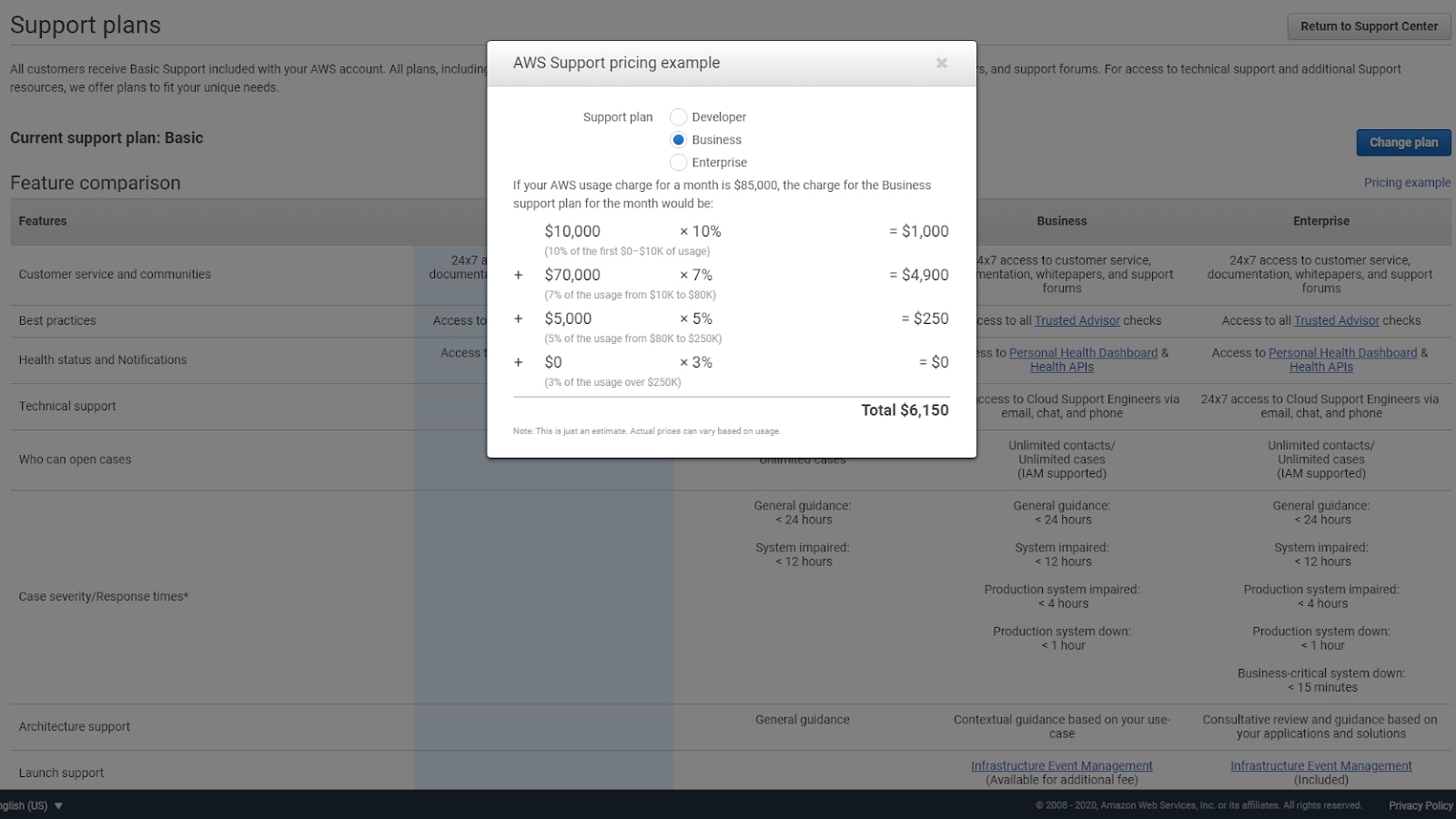
AWS has a large knowledge base that’s well stocked with useful articles, videos, and guides, but until you’ve familiarized yourself with the long list of products on offer, you can find yourself getting lost.
Like everything else on AWS, there are different support plans based on the amount of support that you want. Customer service is available for free, but technical support will cost you.
There are three technical support tiers: Developer (from $29 a month), Business (from $100 a month), and Enterprise (from $15,000 a month). These vary on how much guidance you get, the hours that the support is available, and the speed of support assistance.
Security
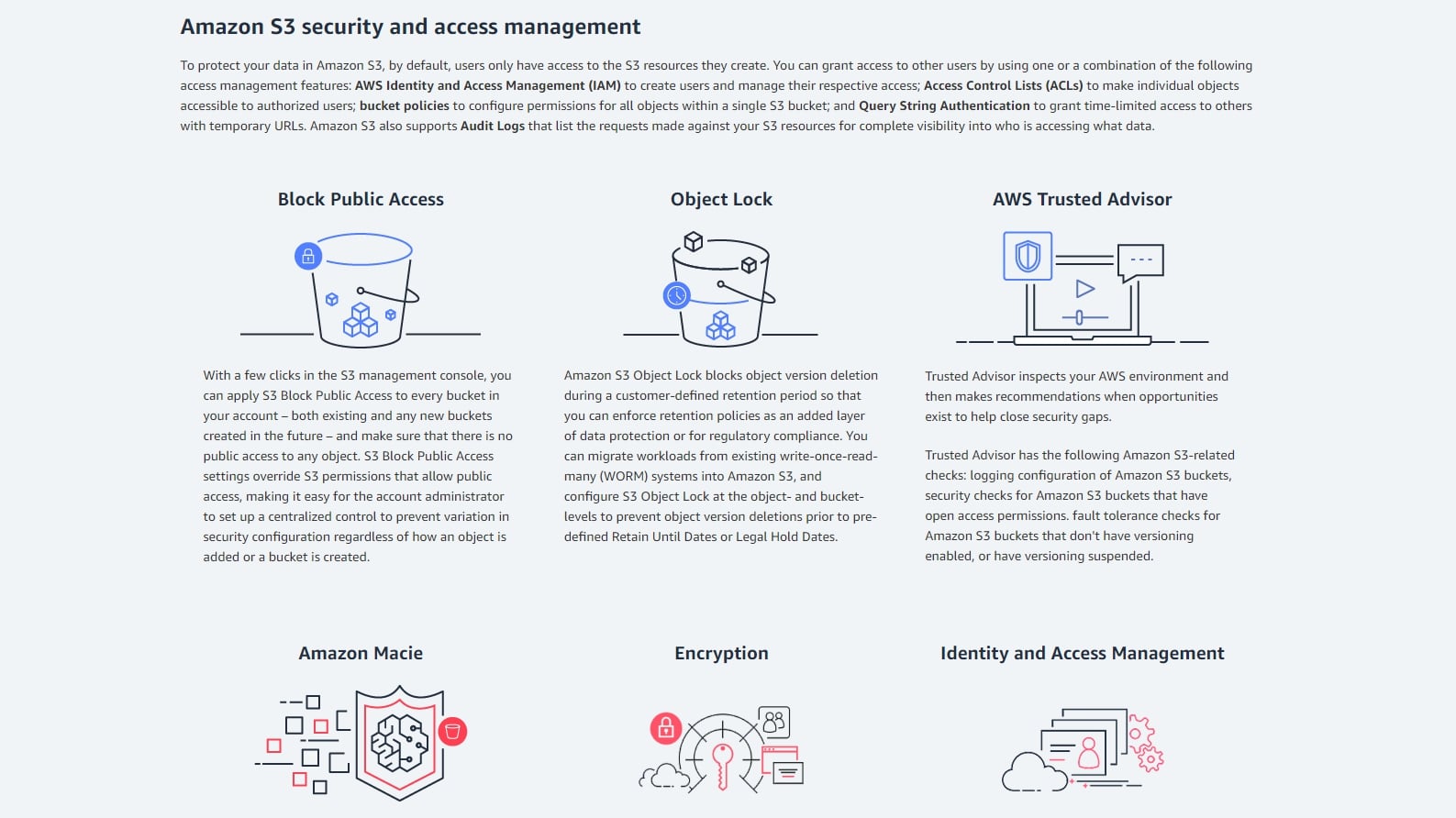
Data in S3 is automatically encrypted when it is in transit and when stored on the servers. You can choose standard AES-256 or use Amazon’s AWS-KMS key management system. The AWS-KMS system makes it easier to manage your own encryption keys. Multi-factor authentication is available, which requires an additional security code to be sent to your smartphone before you can log in.
The security of Amazon’s data center facilities is formidable, with 24/7 surveillance, third-party audits, mitigation against environmental threats, and data redundancy measures. Overall, your data is extremely safe when stored on the AWS platform.
Alternatives to AWS
AWS’s most direct competitor comes from Microsoft Azure. Another cloud Infrastructure-as-a-Service (IaaS) product, Azure has more cloud data centers than AWS, and is arguably easier to use. It also suffers from murky pricing and expensive support, though.
If you don’t need the complexity of either of these products, choosing a cloud storage product such as IDrive, pCloud, or Zoolz BigMIND can make the setup of your storage much easier. You just sign up, download the software, and pay a flat rate.
Final verdict
Amazon S3, part of the AWS platform, is a popular IaaS solution for its pay-what-you-use pricing, long list of features, strong security, and large server network. But be prepared to spend a few hours deciding on the precise plan that you need and setting it up. Once you’ve overcome this hurdle, however, you’ll undoubtedly have one of the most versatile and powerful cloud platforms at your fingertips.
Richard is a technology writer with over 20 years experience in website development, marketing, and SEO. A graduate in Computer Science, he has lectured in Java programming and built software for companies including Samsung and Walmart. Richard writes for TechRadar, IT Pro, Tom's Guide, and PC Gamer.
